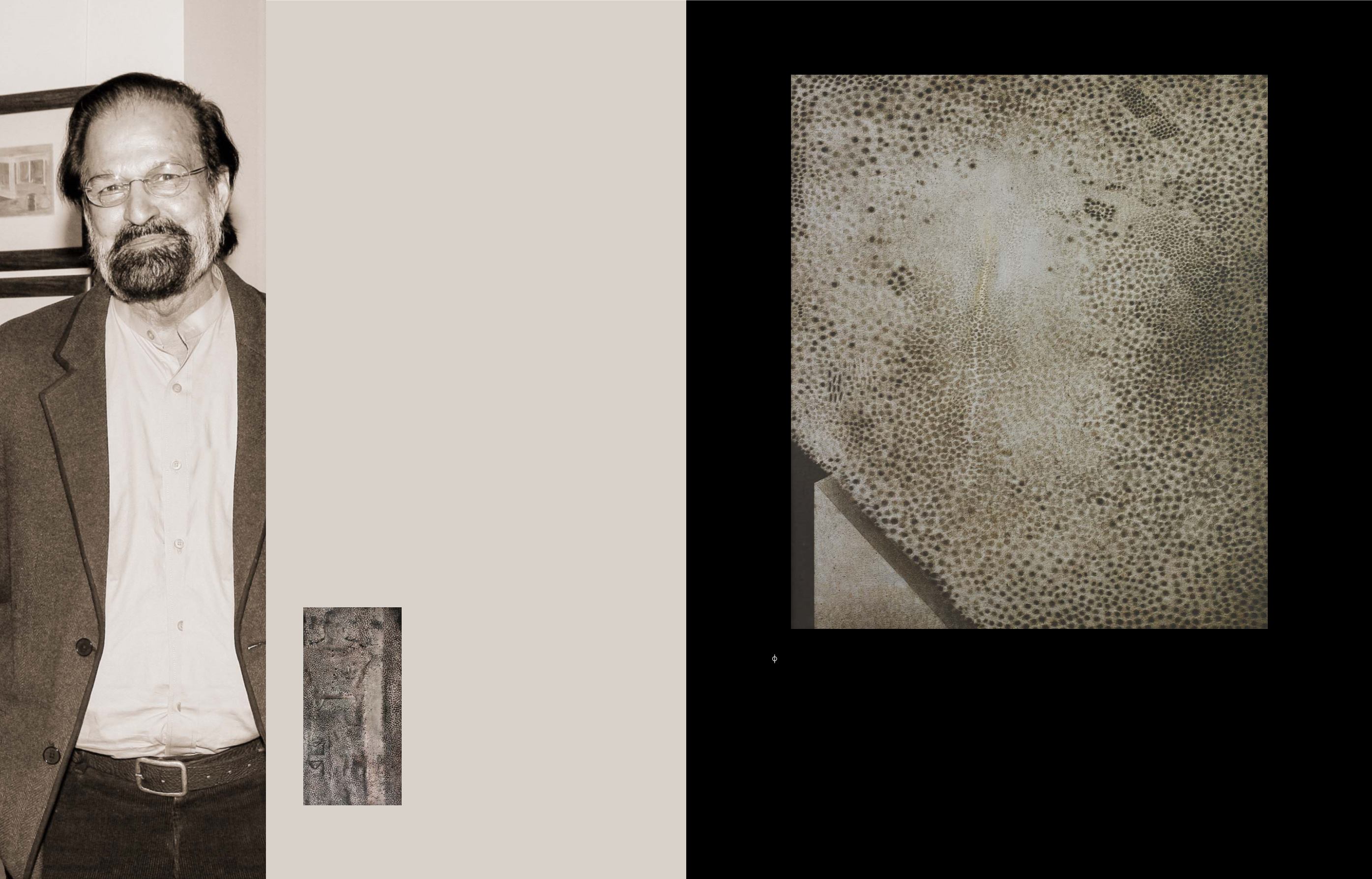

118
119
57
RAMESHWAR BROOTA
(b. 1941)
Untitled
Signed 'R. Broota' and inscribed '(R. BROOTA)/
1999/ N. DELHI' (on the reverse)
1999
Oil on canvas
45.75 x 39.5 in (116 x 100.5 cm)
Rs 75,00,000 ‒ 95,00,000
$ 119,050 ‒ 150,795
PROVENANCE
Private Collection, Malaysia
Private Collection, UK
The present lot is thematically linked to a series of large format canvas works
titled
Traces ofMan
that Rameshwar Broota created in the late 1990s. Following
his seminal ‘Ape’ and ‘Man’ series from the 1970s and 1980s, the artist had
turned away from figuration to semi‒abstract concepts, playing with textured
surfaces that alternately concealed and revealed various proto‒human figures
and architectural forms. While the figure has receded in these works, Broota’s
man features through his absence. “Broota imagined a scenario where man
had disappeared but his relics, the remains of his civilisation colonised his
imagination.” (Ella Datta,
Rameshwar Broota
, New Delhi: Vadehra Art Gallery,
2004‒05, online)
As Gayatri Sinha notes, “Broota’s central subject is man, through whose
tensions and aspirations, lusts and endeavours, the greater issues of life are
mediated. God is indifferent or distant, the human ‘other’ is absent; the solitary
man becomes the site for conflict and resolution.” (Gayatri Sinha,
Rameshwar
Broota: Recent Paintings
, New Delhi: Vadehra Art Gallery, 2001, p. 23)
A new step in Broota’s ongoing search for the nature of truth, this series
of existential canvases accelerated the process of paring his paintings of all
that he deemed superfluous, including narrative and colour. In addition to
producing a distinctive finish, the artist’s labour intensive reverse‒method of
painting mirrors his own struggles and those of his subjects. Using a technique
he discovered while correcting a damaged piece, Broota builds up translucent
layers of grey, blue, brown, or metallic pigments on his surface. Then, using
a razor blade, the artist painstakingly nicks away at these layers to literally
unearth his image from beneath the painted surface.
“The chromatic nuances resulting from the scratching, in spite of their
austerity, can be mesmerizing. Broota's magical handling of myriad textures
creates a brilliant impact. Broota achieves this through the variety of ways
he wields the razor, sometimes to gouge out paint, at other times to employ
linear strokes or fine cross‒hatchings. The minute detail is a fascinating visual
experience.” (Datta, online)
Broota moves toward texture and semi‒abstraction to create largely
monochromatic works that allude to human civilization through
signs and traces.
Rameshwar Broota,
Traces of Man ‒ The Unknown‒Soldier – I
, 1999
Saffronart, 16‒17 March 2011, lot 14
Sold for INR 80.55 lakhs ($183,080)


















